Welcome to episode 2 of the Mind, Body, Spirit, FOOD podcast! Thank you so much to all the paid subscribers who make this work possible. Today I interview physical therapist, yoga instructor, breathwork facilitator and all around amazing being Samantha Fulton. I met Sam last year when I went to her for my own physical therapy needs (diastasis recti, which was causing other issues) and was blown away by her approach to her work. She approaches each body as a whole, unique organism, where everything is connected. This resonated deeply with my philosophies around food, and we’ve since developed a deep connection (and, thanks to Sam, I now have a fixed diastasis!).
A few weeks ago Sam and I taught a class together called Intuitive Eating & Yoga, where I shared my practices around gaining presence and freedom around food, and Sam shared yogic principles around the body as well as how the nervous system influences digestion. Today we’re diving deeper into the nervous system - what it is, how it impacts our food choices, and how it affects the ways we process food. Sam also shares simple techniques to bring ourselves back to center when we’re off balance. Be sure to stay tuned until the end as she offers a beautiful practice that you can implement anytime, anywhere.
You’ll walk away from this episode with a deeper compassion for yourself and your own natural workings. What a gift.
You can listen to the podcast right here, or, better yet, subscribe to the podcast in Apple Podcasts, Spotify, or Stitcher. I’ve also included an edited transcript of the conversation below. Please pipe in with any questions or comments, and enjoy the show!
Find Sam on social media @fulbeing_collective.
Nicki: Welcome to Mind Body Spirit Food. I'm your host, Nicki Sizemore, and in this podcast we'll explore the rituals, traditions, and cultural influences around food and how they connect us to our minds, our bodies, our spirits, the earth and our communities. This is a space that's dedicated to bringing more presence, ease, and joy into the process of feeding ourselves. Let's dive in.
Hello and welcome. I am so happy to have you here and I'm so excited about today's episode. I interview Samantha Fulton, who's a physical therapist yoga teacher, but you guys, she's way more than that. She approaches the body in such a beautiful way. In fact, I met her last year when I went to see her for my own physical therapy needs.
But today we're talking about the nervous system and how the nervous system affects our relationship to food as well as our digestion. There are so many juicy nuggets in this episode, and I think you're going to get a lot out of it. Be sure to stay tuned until the end because Sam offers a beautiful practice for bringing our nervous systems back into calibration when we're off. And this has implications that go far wider than just bringing ourselves back to a state of homeostasis. This influences how we digest, but it also influences how we think about our own bodies. And I think throughout this episode, perhaps my hope is that you'll learn to have a little bit more compassion for yourself.
All right, let's get to it.
Nicki: Sam, welcome. I'm so thrilled that you are here, and that you're actually my first guest on my podcast.
Sam: Ooh, I am.
Nicki: Yes.
Sam: I'm so happy to be here. I'm even more honored to be here now than I know I'm your first guest. I think you can only go up from here because I am not used to being interviewed. So here we go.
Nicki: Not even possible. We're going to start with a question that I ask all my guests. What is your cultural upbringing and how has that influenced your relationship to food?
Sam: I'm laughing and breathing. I grew up with my mom. My parents were split since I was very young. And so I lived with my mom and my younger brother, and my grandparents lived upstairs from us. So we were very extended family oriented. And my father actually lived with his parents as well, so I had it on both sides.
Nicki: Wow, that's great. Or maybe not, I'm not sure!
Sam: It was great. And other things. We were very Italian, and very food oriented. My grandparents were very focused on food as sort of the indicator on how everyone was doing. Food was comfort. Food meant social engagement. It meant family gatherings and family meals. But it was also, “how good you're doing.” You know, like, what's wrong? You're not hungry? Why didn't you finish your dinner? You look sad, you look tired, you look sick. Here, have something to eat.
Nicki: So food was the remedy for all emotional distress.
Sam: It was the remedy. Yeah. We joke that the Italian psychotherapy is, “here, just have a slice of mozzarella.” Some people say garlic is the Italian penicillin. We kind of used it to treat mental illness as well. I say that with a warm and open heart. I don't say that to mock mental illness at all. It's very present in my family. A lot of us needed other medicines too. But that’s our running family joke.
My mother was definitely more progressive though. I watched her try to figure it out. She worked full-time, so my grandparents were caring for us a lot, but my mom did cook very whole foods. Our meals were always very complete, so there was always a protein and a starch, and a veggie and a dessert, and we had to eat it all.
Nicki: And did you eat at home most nights or was your mom cooking most nights?
Sam: Yes, yes. We hardly ever went out to eat that. I remember we maybe had pizza nights on Fridays. But we definitely had a lot of family meals at home that were cooked by her or my grandparents.
Nicki: So as you got older—and you can totally correct me if I'm wrong—food was medicine in a very emotional way. Food was an indicator of how good you were doing. How did that impact you as you got older and perhaps cooking for yourself?
Sam: Oh, that's a good question. I think I had that food-oriented nature from my grandparents and extended family, but I also watched my mom work with her own body image issues. That probably stemmed from when she was a child—sort of unresolved issues. And it was the eighties and nineties, so it was very “low fat.” Diet culture was starting to emerge. I also got influenced by that, just watching her go through her journey. I think I did have an innate message to myself that food was a reward and I could use it as reward or punishment, which I think is a really unhealthy relationship. It's an unhealthy association.
Nicki: I think that a lot of people listening can relate to that.
Sam: Yeah. I mean, it's food and exercise. I'm a movement professional, so I see that happening with movement and exercise all the time. I guess I was conscious of the food aspect of it, but I didn't realize how present it was in my body, in my psyche. I try not to live that way, and I think I'm gradually becoming more conscious, but it's certainly there.
Nicki: I know, It's interesting because you had an Instagram post before the holidays and it sparked an Instagram post for me talking about food—this kind of capitalistic view that we have of food, especially I think for those of us who did grow up in the eighties and nineties. It’s an input versus output equation. With food and exercise that's absolutely what I was taught—you eat this much, you better work it off this much—instead of a nurturing, soft, gentle relationship. Both of us realize now that it's not input versus output. It's not how the way our bodies work. There are times in my life where I have a lot of energy and movement feels really good, and there are times in my life when I need a lot of rest. I'm getting better at honoring those cycles, but it wasn't what I was taught.
Sam: Right, right. That makes all the sense when you say it. It made me exhale. That's what I attempt to bring to my clientele about movement and exercise, and I think what you're trying to do with food, which is why we connected so much and we wanted to merge our worlds.
Nicki: Well that gets me to my next question because last week we taught a class together called Intuitive Eating and Yoga and it was a really powerful class. I approached the class from the food perspective and you dove into yoga and the body, but also the nervous system. And I haven't been able to stop thinking about this topic. Before we kind of get into it, I'll ask you how you became interested in the nervous system and then we can kind of start to unravel what the nervous system even is.
Sam: We can't really talk about almost anything else without holding holding and knowing [the nervous] system and our inner workings. When I work with people with pain, people with chronic illness, people with a static injury, an injury that just happened when they were doing X activity, or something more chronic—and when I listen to my own body, when I have pains myself or when I'm experiencing anxiety, whatever it might be—is that even when that symptom resolves, even when I don't have that pain anymore or it changes, or it shifts, it's not really done. The work can always continue. It's not ever the exercises or the yoga poses that create the lasting change. Actually, the lasting change comes when we learn to listen. When we learn to commit to a deeper relationship with ourselves on all levels.
Nicki: I just got chills all up and down my body. Yep.
Sam: Thank you. Me too. I know this, but then I forget it. So it's important to keep learning.
Nicki: So, learning to listen, does that mean starting with the nervous system? Do you start there before you go deeper?
Sam: Yes. And you know, the first thing we did together was breath work. Breathing is one of my favorite tools and one of the first tools that I use with myself and with others to access the nervous system. The breath is always right here. We always have the breath. We don't need anything else. If we're practiced in that, we set ourselves up to regulate our nervous system.
I work with myself because I'm on my own wild and crazy journey with anxiety and ADHD. I was diagnosed as an adult with ADHD, and when I started to learn about my brain and how I'm wired, it was so liberating. To learn that there's nothing wrong with me. There's nothing wrong with anyone. And the responses that I was experiencing in my body were an attempt at my system trying to regulate, trying to keep me safe. It’s a very smart thing that my body's trying to do. To learn how I'm wired, it was like, oh my gosh. It was very liberating, and it also put a lot of tools at my fingertips.
Nicki: So what is the nervous system for those of us who aren't versed in this language? I think all of us have a sense of the “fight or flight,” but can you explain what it is?
Sam: Yes. Simply put, we're referring to the autonomic nervous system, which is conducted or regulated by what's called the vagus nerve. And the vagus nerve is one of our cranial nerves, so it comes from our brain—our brainstem. When I learned about the vagus nerve, it really shifted a lot of things for me. I talk a lot about the polyvagal theory.
The old model of the autonomic nervous system is what we know to be our fight or flight response—that's called our sympathetic nervous system. That's our accelerator. It’s what causes the response to fight or flight. In our modern world, it doesn't always look like fight with our fists or flight with our feet. It can look like a lot of other things, which we may or may not get to in this conversation, but it's very complex as to how that can show up in our bodies in our modern world where we're not fighting a bear or running away from a bear. But we are having other responses and other bodily experiences that feel quite like that.
And then we have the parasympathetic nervous system (this is still the old model), which is our break. It’s “rest and digest.” And the old model says one response is good, and the other is bad. One is up, the other is down. It was very polarized.
The polyvagal theory was developed by a doctor by the name of Porges. If anybody's interested, you can look up Stephen Porges. He has a lot of resources on online. Be careful about other resources of the polyvagal theory. There are other good ones certainly, but there's also a lot of misinformation on the internet.
Nicki: I can commisserate. In the food world there’s a lot of misinformation.
Sam: The polyvagal theory is a little bit nuanced; it’s that the vagus nerve has two branches. We still have our sympathetic nervous system, which again, is that fight or flight response. But then our vagus nerve has two branches. One is the dorsal vagal branch, which is considered numbing, shutting down, freezing. This is that down energy.
And then there’s the ventral vagal branch, which is more balanced. When we're in this state and we're in this response, we are secure. We can socially engage, we can digest our food, we can sleep well. We can have healthy relationships, healthy exchanges. I'm not even going into our organ function, but all of these nervous system responses greatly influence our organs, our heart, our lungs, our digestive organs, our metabolic system.
The theory teaches that there's a spectrum that we’re on. It's not like I'm here, here, or here, but there's a spectrum or like a ladder on which we climb up or down. And we all have a different capacity to feel balanced. We all have what's called the “window of tolerance.” So my window of tolerance might be different from your window of tolerance. My window of tolerance today might be different than what my window of tolerance was when I was 18.
It definitely changes as we change. And different stressors in our lives may shift where we are on the spectrum. And the goal is not to stay balanced all the time. A healthy nervous system is not always relaxed, is not always balanced.
Nicki: I love to hear this.
Sam: Isn’t that good news? A healthy nervous system needs to be challenged. We need stressors and then we need the ability to recover. We need tools to recover.
Nicki: And that recovery is probably the thing that's important. How do we learn how to recover when
we do get stressed?
Sam: Totally. There are also times in our lives that we need stress. This is an example, I need a little bit of that sympathetic activity, that fight or flight activity, if I am going to drive on the Taconic at night. I need a little bit of increased attention, a little vigilance. I need a little bit of that spark if I want to stay attentive. Or if I'm playing a competitive game or something along those lines, you want a little bit of oomph, you want a little bit of spice.
Nicki: You know, it reminds me of cooking. Cooking for me is at one time very relaxing, and just kind of slow. But there are times when I love the energy—when seven things are cooking at once, and I get in this dance state and it's definitely elevated. I'm present and tuned in, but whew, I’ve got to be in that upper [state], keeping my eye on everything. But there's something exciting about that. There's something fun about that. I don't want to cook like that all the time though. I also want those
times where it’s—
Sam: And you don't want to stay there!
Nicki: No, I don't want to stay there (laughing). This is why I don't work in restaurant kitchens, which I have done and which I do not enjoy because you're very much in that hyper state. But that's interesting to hear that we go back and forth and that it's not necessarily good or bad all the time. Right?
Sam: Absolutely. And to give you an example on the flip side is that if I want to enjoy a quiet meal with my loved one and I really want to digest my food well, I want to be balanced, of course, but I also need a little bit of that dorsal vagal state. I need a little bit of that downward tone to my energy. That's what really gets my digestive juices flowing, and it gets me very present and relaxed in my body.
Nicki: I love learning about this because our nervous system directly influences our digestion. I see digestion from a very energetic place. I literally had indigestion for five years after my youngest daughter was born because she was—I love you Juni—but she was a hard little baby and a hard toddler. I would go from rushing from work, to cooking, to eating, and I would never pause. I would never take a breath. She was a fussy baby at the dinner table and all of that built up. My digestion was so poor. It wasn’t until I hit a wall with it and realized, wait a minute, I can see this pattern. I can see what's going on, and I can see how fast I'm moving, and I'm not even breathing through any of this. But while I was in it, I couldn't see it.
Now, looking back, I can see that my nervous system was like, whoa come dinnertime. I mean, I’ve had a meditation practice for a very long time in the morning, but then I'd get into the kitchen and everything would be thrown out the window! I’ve been bringing these practices into the kitchen, and now I can see that these are nervous system practices in some way. I always take two deep breaths before I start cooking and before I start eating. And I engage my senses. While for me this was a way to bring more ease and joy into the process of cooking, this was also calming my nervous system. So what is that connection between food and the nervous system?
Sam: The vagus nerve is actually also called the gut brain. And the heart brain. Isn’t that beautiful?
Nicki: Yes.
Sam: Our body is always giving cues, always firing, always giving us subtle cues unless they need to be louder, right? They start subtle and when we don't listen, they get louder, but it’s always giving subtle cues asking for attention here or there, asking for balance where it's needed. This internal messaging system is called interoception. We think of our senses as being sight, smell, taste, hearing and touch. But we actually have a sixth sense and it's called interoception. And it's more complex than I'm saying now, but it's basically our capacity to decipher these internal cues and sensations that we're feeling in our bodies, and then decide what we need based on those sensations.
If we're constantly dysregulated or if we get stuck in that high energy state, if we get stuck in that sympathetic response, or if we're getting pulled down into that dorsal vagel state and we can't rebalance—we don't have tools to rebalance or we don't even know that we're not balanced—we get mixed up with the cues. We can't accurately decipher what the cues are telling us to do. It’s easy to get the wires crossed. So for example do you ever eat when you're bored?
Nicki: Yeah.
Sam: Right? It’s not hunger. We eat when we're bored or we don't eat when we're stressed, when we're anxious, or vice versa. These can go both ways because people manifest these things in all different ways. We scroll on our phones when we're feeling sad or when we're lonely. We just want go to sleep when we're in pain, or we can’t sleep when we’re overly tired. These things get really mixed up.
Nicki: And so we're seeking something to fix the problem, but the thing we're seeking is not the cause of the problem. Is that right? Like we're seeking almost these numbing behaviors. Like, “oh, I'm so bored, I'm just going to eat something,” but actually the boredom is coming from somewhere else.
Sam: For sure. These are all ways of scratching an itch. We're scratching a deep itch and we're not quite dropped in enough to our own systems and quite practiced in having a relationship with ourselves, so it manifests in all kinds of ways. We're all addicted to something—these little glass rectangles that we carry around in our hands all the time, they are big back scratchers for people. And food can also be, among many other things. But then a little more complexly, down to the cellular level, we can’t digest food properly when we’re dysregulated.
Nicki: I can feel that in my body, but it's taken me years to understand that connection, and I didn't have a language for it until you and I started talking. So how do we know when we're dysregulated and how do we get back?
Sam: Such a good question. There are so many symptoms of a dysregulated nervous system that will oftentimes look like other things and that oftentimes come as the result of other things as well. It helps to know if I tend to lean towards the fight or flight response. If that’s my go-to, if I’m a high tension kind of person and I’m in fast forward mode all the time, it helps to know that our digestive system functions are actually very slowed down when we're in that state. You would think it's the opposite, but evolutionarily speaking, if we're running from a bear or if we're fighting the bear, we can't use energy to digest food. We need to conserve our energy—we’re not going to have the right hormones released in our system, and our motility, the muscle contractions that move food through our system, that’s not where we’re going to use our energy. We’re using our energy in our large limb muscles.
And vice versa, if we're stuck in that freeze or numb, low energy mode, our digestive system works overtime. It senses, “I don't have enough energy. Maybe I need to break down some food.”
Nicki: So it tries to make up for the fact that you are feeling so low.
Sam: Exactly. It tries to overcompensate. Our bodies are always doing that. They're trying to help; these responses are very smart. We have to thank our bodies for trying to keep us safe. These systems evolved over time, evolutionarily, out of necessity so that we would stay alive. It’s our survival brain. And we evolved into higher thinking beings, and we do have the ability to decipher the threats, but our bodies don't know the difference. It’s not conscious. A threat is a threat, and our higher thinking minds can say, “wait, is the fact that I'm stuck in traffic and I'm late for a meeting going to kill me?” But first we have to be in touch with what that response feels like in our bodies or else we can't connect to that.
I mean, there are countless signs and symptoms. Chronic pain, which can either be the stressor or the stress response, a lot of the times it’s both. Digestive disturbances [are another]. We always want to determine with the help of medical professionals if digestive issues are structural or physical, diet related or nervous system related. And most often it's a combo. You don't want to assume that just because I'm having stomach pain, I must be stressed. It’s very important to rule out anything that's going to threaten your health. But yeah, sleep disturbances, irritability, emotional swings, brain fog, memory stuff, attention span issues, you know, the list goes on.
Nicki: It's so interesting. My podcast launched last week, and I was having a somatic—a bodily—fear, and it would come and go. It was like a tightening. All of a sudden I'd be sitting there doing nothing and all of a sudden I'd have this fear response. First I felt like, okay, I need to acknowledge that I'm having this fear response. I feel like just acknowledging it is a major step in easing it. Even though the fear response persisted, I could see it, and I could say to myself, “oh, that's just fear. I can sit in the fear. My life is not threatened right now. The fear is coming from a deep, subconscious place. I will sit with you, but I don't need to change you.”
What I think I would've done in the past when I was a younger person—that fear would've caused me to go do something to numb it. I don't know what that thing would've been, maybe exercise over-exercise or something to have given me a sense of control.
But I think what I'm trying to say is that if we can feel these things that come in through our body and if we can name them, then it gives us that little bit of space. It feels like you have a little bit of space so you can be like, wait, “how do I want to react to this? What's the action going to be?” Or maybe there's absolutely no need for action. Maybe I just need to sit here with it.
Sam: That is perfection what you just said. That's exactly it. And that comes from a deep place of self-compassion.
Nicki: Hmm. Yes.
Sam: And that is yoga. It’s, “how do I show up for what’s present, right here and now, without wanting to change it, without going on with a story about it. Just, this is what's here.”
Nicki: This is what's here. So when those things show up and we're feeling stressed, we're feeling anxiety—or maybe we're feeling so low and so sluggish—and we can name it, we can have compassion for it and not judge ourselves for it, what are a few easy tools that you can give us to come back into our body? To connect, to calm, or to bring up?
I know in working with you that breathwork has been really powerful for me in either calming the the nervous system and in invigorating myself to get moving when I am in that stuck overwhelmed state.
Do you have any tips?
Sam: Ah, I do. And you already introduced one, when you were saying, “when I can name it, it's very liberating.” To say something, to call it what it is, to say it out loud or in your mind, it’s very, very powerful.
One of my favorite go-to’s is a body scan and name the sensations. We can do this with physical sensations, we can do it with pain, we can do it with hunger (or something that we are interpreting as hunger and we're not quite sure). We can do it with thirst, we can do it with emotional feelings. Whatever arises, we can do this. And even if it's emotional in nature, even if you're feeling sad or fearful, our emotions live in our bodies. Whatever is in our head is in our body.
Nicki: Ah, right.
Sam: So I like to either sit or lay down. And start at the very top of my head and bring my awareness there. If people are trying this at home, bring the awareness through the body, from the head, into the face, into the neck and shoulders, down the arms, into the hands, down the front of the body, the chest, the ribs, the belly, the spine from the neck down to the lower back, the pelvis and the hips, the thighs, the knees, the lower legs, the ankles, the feet, and out through the toes.
See what's talking, if there's a sensation anywhere. Stay with it for a few breaths. And I love to use the phrase, “here and now I feel.” We might have a tendency to go on in our minds like, oh, you know, “here in my shoulder now I feel a tightness. Oh, well that's because I have bad posture.” We might have a tendency to attach reasoning or story or dialogue about it. And the practice is really just to describe the sensation. Here and now I feel a tightness. Here and now I feel a burn. Here and now I feel a poke. Right? Whatever it might be. Or here and now I feel joy. Here and now I feel fullness. Here and now I feel space. It can be anything.
Taking a few breaths with just those describing words, with the intention of allowing it to be exactly as it is without changing it, is very powerful.
Nicki: it's full acceptance, isn’t it. In my body the way I feel that is, when I fully accept something, I stop resisting it. And when I stop resisting it, guess what? It can move through me. When I try to battle something within my body, it gets even more deeply lodged.
Sam: Mm-hmm. Again, it comes from a place of self-compassion. We don't need any extra blame or shame or judgment about what we're feeling. Especially if what we're already feeling is hard.
Nicki: Yes. Thank you. Amen.
Sam: I'll also just say that there are different approaches. This technique, if it's not resonating, that's okay. There are a vast variety of approaches for folks if if they really want to get in touch with their nervous system.
There are what's called top-down tools, which work with how our thoughts and beliefs affect our system and affect our bodies, which can be very powerful. This is like psychotherapy, group therapy, awareness practices like meditation, affirmations and intention settings. These can be really great tools for people who that resonates with. That top down approach from my brain to my body.
And if that tends to not work for you, the bottom up approach is using our body and our breath to connect to our brain, to affect our brain. This is like breathing exercises, movement, postural positioning, body work, play, and even certain foods and drink. How does a mug of hot tea make you feel if your energy is up high? Or if your energy is down low, how does a citrusy sip of water feel? Again, it's understanding interoception sense, which practices like the body scan can really help hone. Then we start to know what tools will work for us.
Nicki: Yeah, because the vagus nerve is a two-way street, right? So information goes from our brain to down into our body, but also from our body up into our brain. So if we can see that and manipulate—not manipulate that, that's the wrong word—but we can come at it from both ways. For me, that just gives me an extra little superpower where if my body is feeling this way, let's bring it up to my brain, or vice versa. There's knowledge both places.
Sam: Oh you are so saying it. And you're also holding two truths. It’s not the brain that directs the body, and it's not the body that directs the brain. They have a symbiotic relationship.
Part of the reason why I love breath so much—part of the reason why that's one of my favorite things in the world—is because our respiratory system is the only—it’s one of our autonomic nervous system functions, right? The others are our cardiovascular system, our digestive system, our metabolic system. Those things are always happening all the time. They happen automatically in our sleep. We're not thinking about it. We're digesting food. Our hearts are beating. There's a lot going on without our decision making to make it happen. But our respiratory system is the only autonomic function that is both. It's going all the time—we’re breathing even when we're not thinking about it. And then we can also consciously change the breath at any moment in time.
It's both voluntary and involuntary. So that's my next go-to tool. The first was the body scan with naming the sensations, and the second tool is breath. The most basic breathing pattern, if you've never worked with your breath before, there's something in the yoga practice called equal breath. It’s a one-to-one ratio. I like it because it's very accessible. You can do it anywhere, and you can also pace yourself quite easily. You don't have to match anybody else's breath.
You would start by just first paying attention to how your breath feels naturally and not try to change it.
And you can bring a count to your in-breath, and whatever that count was—maybe you only breathe in for two—you try to breathe out for two. You match the exhale to the inhale. Then over time it might feel accessible to increase by one beat, the in-breath and the out-breath.
This rhythm starts to naturally soothe the nervous system. There's a pulsating thing that our internal workings are just vibing with. It's very similar to rocking a baby. It occupies something in our brains—we don't want to be so busy, we don't want to be so scattered. It hones our attention. It’s extremely powerful.
Nicki: Sam, thank you so much. I feel so calm and content just from hearing you, just from witnessing and practicing these practices with you. And I hope that those of you listening out there, I hope you give these a try. Let us know where we can find you in the world?
Sam: I'm a little hidden. I need help getting more present on social media and on the internet. I'm much better in person one-on-one, so, oh my gosh, I would love to meet you all in person. But my website is fulbeingphysicaltherapy.com. My Instagram page is @fulbeing_collective. And I hope to do another Intuitive Eating and Yoga workshop with you, Nicki. So your folks will definitely hear about that.
Nicki: I want to thank you for these amazing teach teachings, for introducing us to the nervous system and for giving us all some—oh gosh, I'm going to say this—food for thought. Sorry, that was bad. But the nervous system, how it influences how we're eating and how we're feeling, I just feel like being granted this knowledge—just like you said—makes me feel more compassionate for myself. If there's a better gift out there, I don't know what it is. So thank you for that. And thank you for sharing your beautiful breathwork practices with us.
Sam: Thank you so much for having me. I'm so grateful to be connected to you in this way and to connect with your community
Nicki: All right. Until next time. Thank you so much for listening. If this work resonates with you in any way, you can support it by leaving a review or comment or sharing it with friends. Also, you can sign up for the newsletter, Mind, Body, Spirit, FOOD, and by becoming a paid member for just $5 a month you help fund this entire project. Thank you so much to all of you who are already subscribed, especially to those paid subscribers. This work could not happen without you. I'm Nicki Sizemore, and as always, remember to nourish yourself with intention and love.


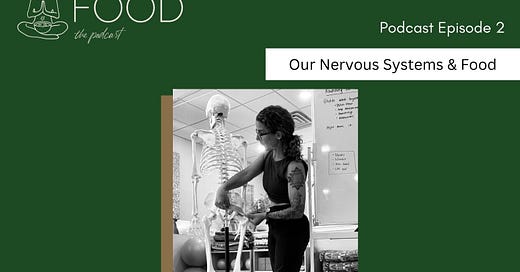


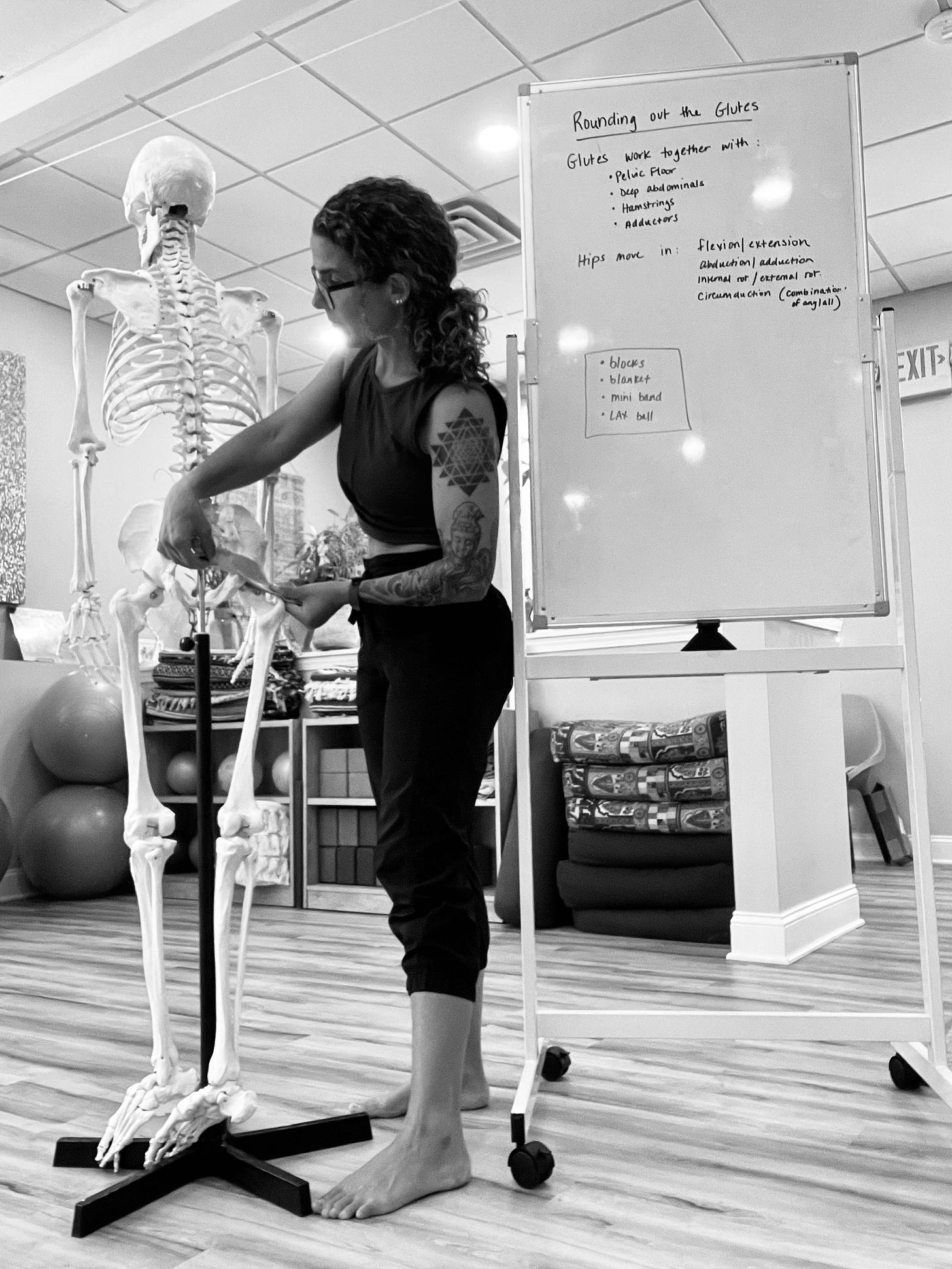



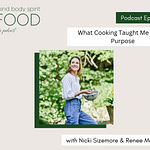

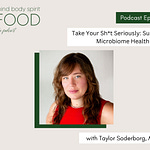
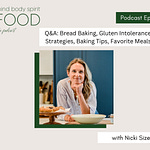
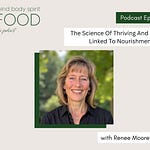

Share this post